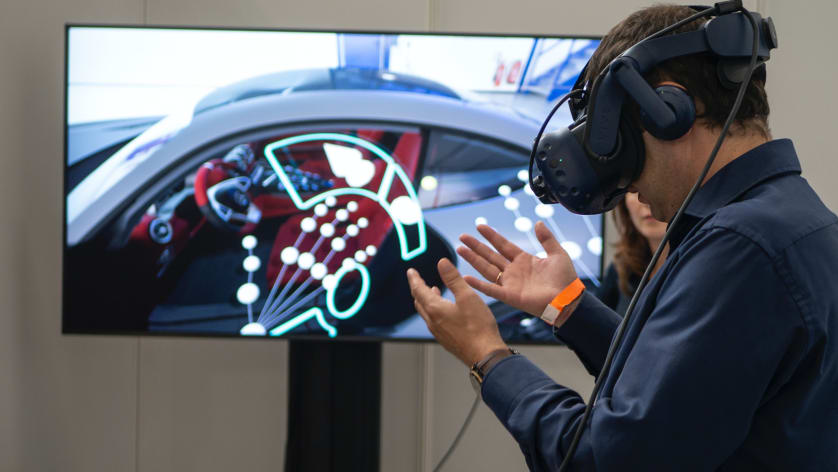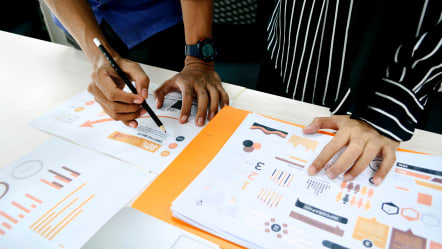9 Ways to Use WebAR

Augmented reality technology is often used for gaming experiences, but it has many more potential applications. AR offers companies the opportunity to create interactive product labels, movie posters, and more.
WebAR is a recent development in the field of augmented reality (AR) that has eliminated the need for apps and downloads, making these experiences easier than ever to distribute and enjoy directly inside your mobile internet browser.
Adding interactivity to your content can increase its effectiveness at capturing an audience’s attention by up to 80 percent, according to a recent survey by the Content Marketing Institute and Ion Interactive. Here are nine ways you can use WebAR to improve engagement with your audience.
1. INTERACTIVE PRODUCT LABELS: ‘MISSION TIGER’ BY FROSTED FLAKES
Interactive product labels powered by WebAR are a great way to make your product stand out on the shelf, add additional information your customers may otherwise gloss over or call attention to special causes. For example: Kellogg’s recently launched a campaign to help raise awareness for the work they are doing to support sports in schools. Through face filters, mini-games and a special message from Tony the Tiger, the WebAR experience helped spread awareness and drive donations for the company's initiative.
2. 'TRY-ON' PRODUCTS: FACE MASK INSTRUCTION AND PROMOTION
WebAR's facial tracking capabilities give companies that sell products for the head and face a unique opportunity to let customers try on these types of products right through the camera on their phone.
For example: By leveraging WebAR facial tracking, Viewtoo, a maker of fabric face masks, was able to drive sales and educate customers on the proper way to wear face masks at a time when in-person shopping was highly discouraged.
3. EXCLUSIVE BRAND CONTENT: SAM SMITH’S ALBUM RELEASE
Exclusivity is often a strong motivator for consumer behavior. The combination of WebAR with traditional targeting tactics provides the ability to share exclusive experiences with any audience, anywhere.
For example: For a limited time, fans of Sam Smith can access a special experience on Spotify that is aligned with his latest single release.
4. LIVING PRINT MATERIALS: TOYOTA SUPRA LAUNCH
Image recognition powered by WebAR can turn any piece of print collateral into a fully interactive brand experience, increasing user engagement, effectively communicating complex information, and leading to stronger brand recall.
For example: As part of a recent marketing campaign for the new Supra, Toyota gave customers the opportunity to view the car in their garage via WebAR technology, take it for a brief test drive, and explore different paint color options.
5. IN-DEPTH PRODUCT INFO: CALLAWAY MAVRIK LAUNCH
Traditional media may not always be the best way to explain advanced product features or new technological innovations. However, by using WebAR to share interactive 3D models and animations, you can more easily bring clarity to complex ideas.
For example: To help explain the advanced features of their latest line of golf clubs, Callaway used WebAR to give customers an in-depth look at the lines AI-powered design process, use of high-strength titanium and new innovative shape. The experience was available exclusively at retail locations, also helping to drive in-store traffic.
6. PINK FLOYD DISC SET RELEASE: SHARABLE CONTENT
With more sophisticated social media algorithms and overwhelming digital noise, it has become increasingly challenging to create shareable content. WebAR provides an opportunity to give your audience a unique experience, making it feel special and personal, like a gift instead of an advertisement. The Digital Marketing Institute suggests that this can be one of the most successful ways to increase the likelihood that your content will be shared.
For example: To help promote Pink Floyd's the Later Years disc set, Sony Legacy gave fans the ability to place life-sized versions of the rock band's legendary album cover art in real-world scenarios. The final experience was viewed by tens of thousands of fans across more than 140 countries, leading to countless shares and interactions on social media.
7. PERSONAL MESSAGING: PRESIDENTIAL SPEECH
The lack of in-person events can make it difficult to establish a personal connection with your audience. However, by harnessing the power of WebAR along with holograms, you can once again be "in the room" with your most important followers.
For example: The president of Israel used holographic technology to deliver a special Independence Day message to his citizens during the COVID-19 pandemic, continuing his tradition of meeting with citizens “in-person” on this special day.
8. VIRTUAL EVENTS: POT NOODLES CAREER FAIR
The elimination of live in-person events has created challenges for recruiters, sales personnel and the like, but WebAR can be used to create fun, engaging and socially distant event experiences that can be safely enjoyed by an unlimited number of attendees.
For example: To help attract fresh young talent, POT Noodles turned to WebAR to help recreate their annual career fair booth complete with a live DJ, conference booths and a social lounge.
9. WebAR BUSINESS CARDS
Traditional business cards only include personal contact information, company logos, and possibly a profile picture. However, with WebAR, these personal advertisements are now limitless. You could add a personalized message, an interactive product demo, or direct links to your company’s website and contact page.
For example: Stanley Black & Decker, a tool making company, recently utilized WebAR to take their business cards to a new level. The cards now feature a to-scale measuring tape and click-through links to the company website and social channels.
WebAR will be essential in the coming year for a number of reasons. What innovative ideas do you have for WebAR to boost your company into competition 2022?












